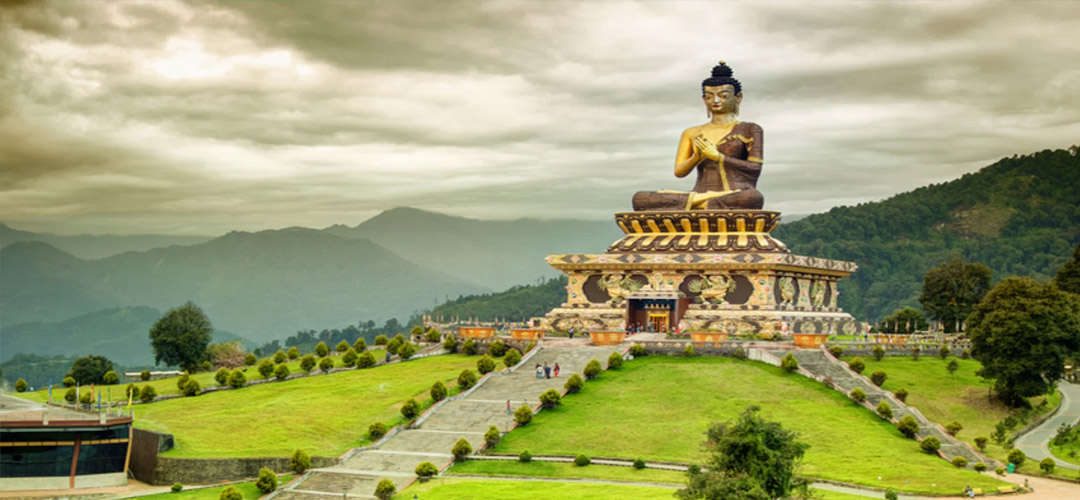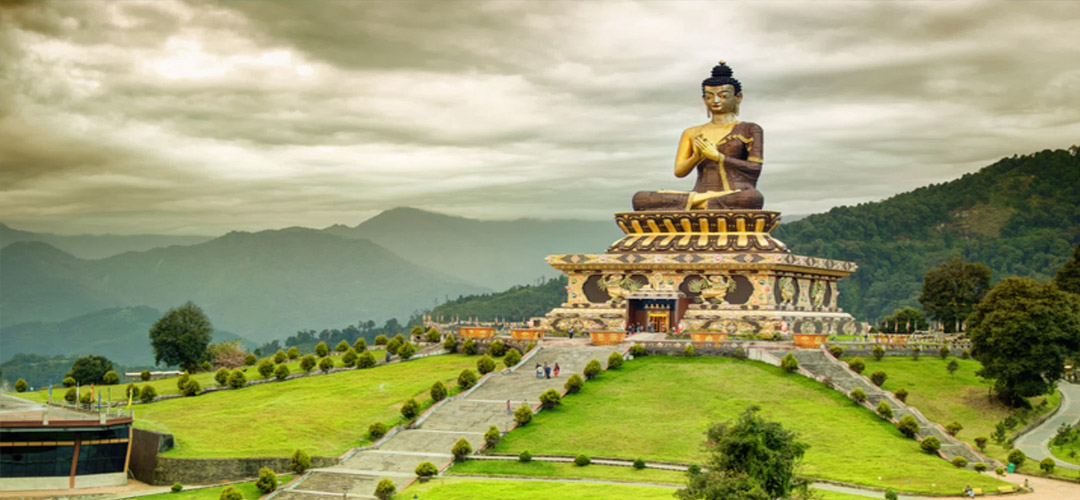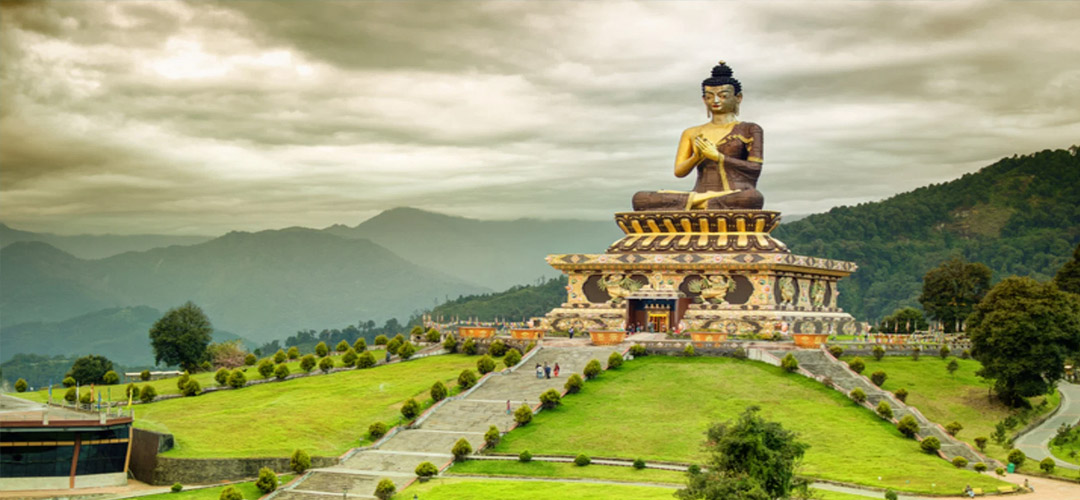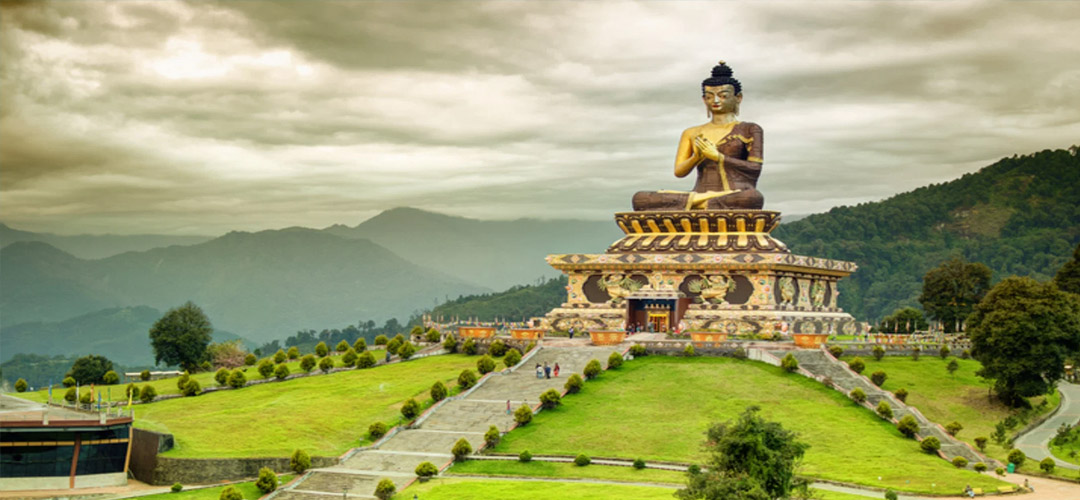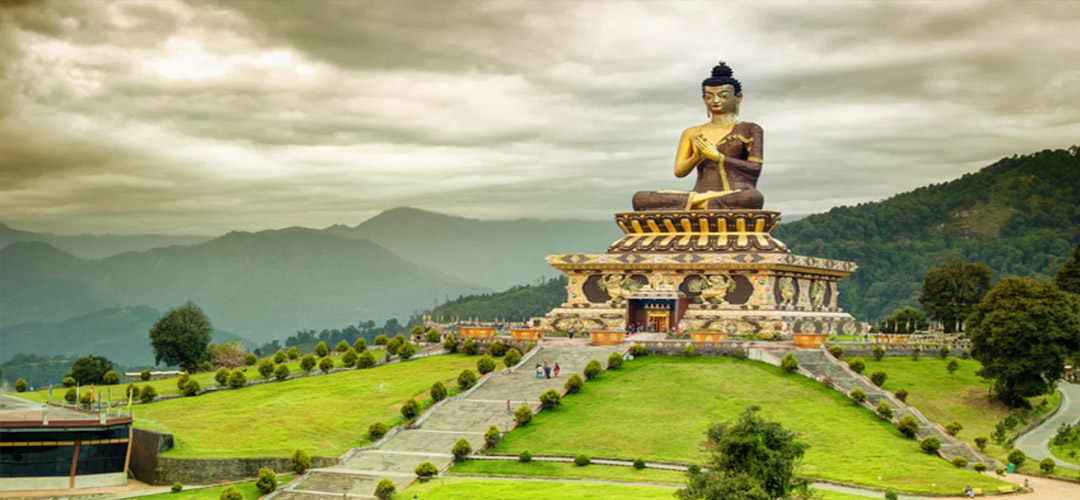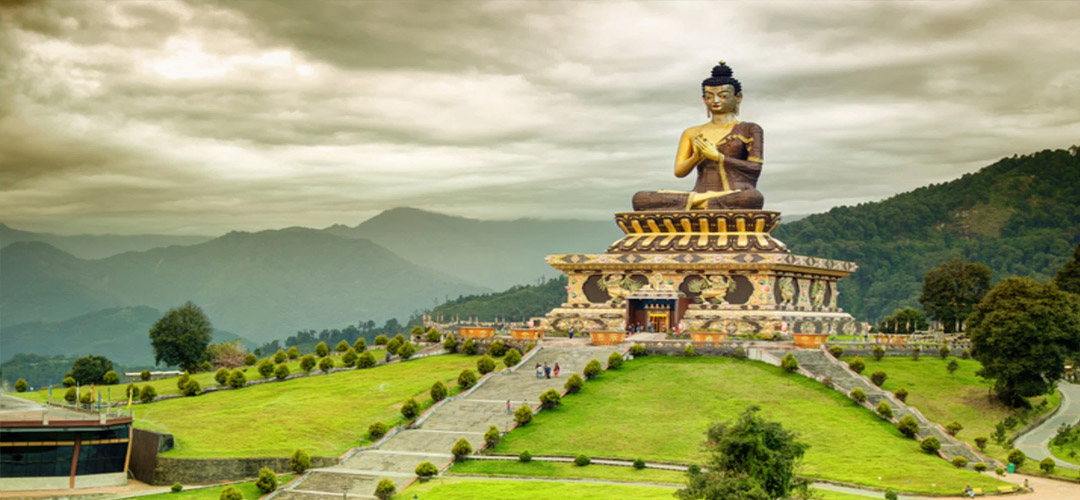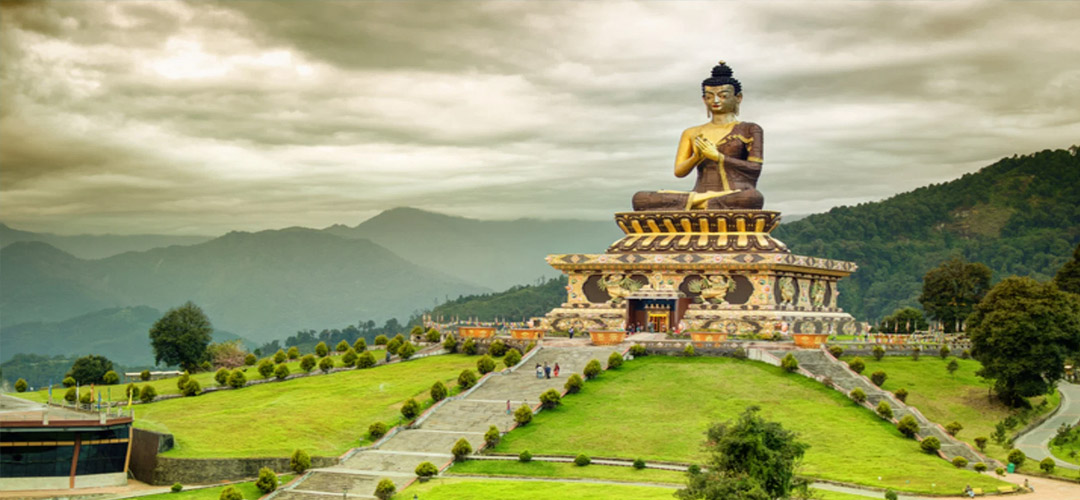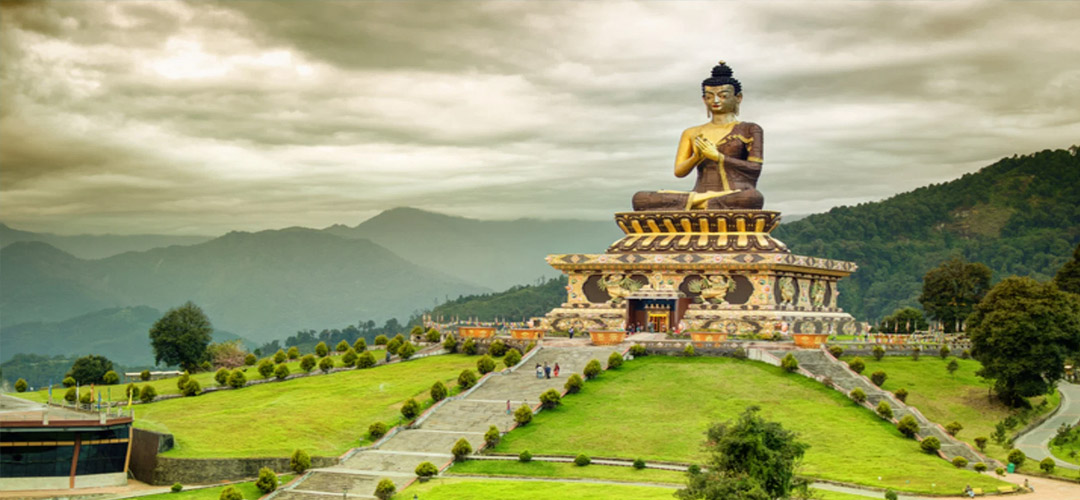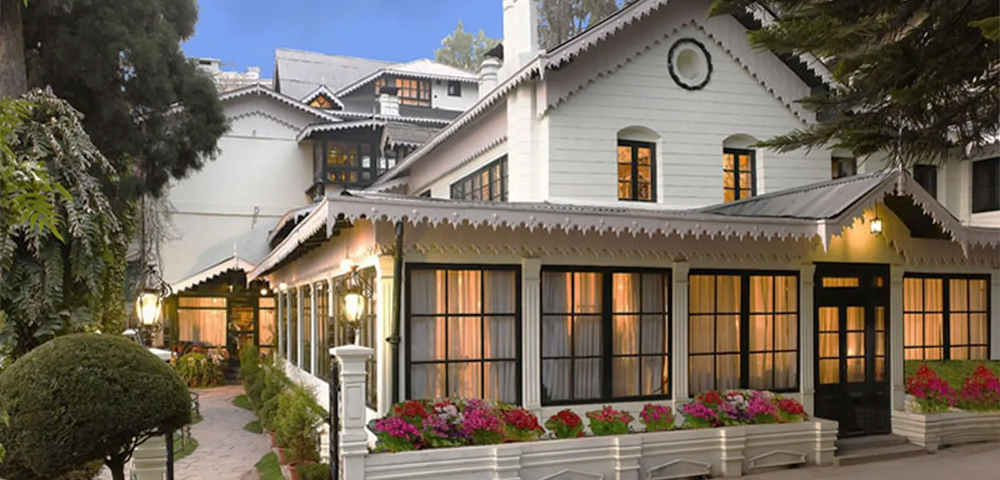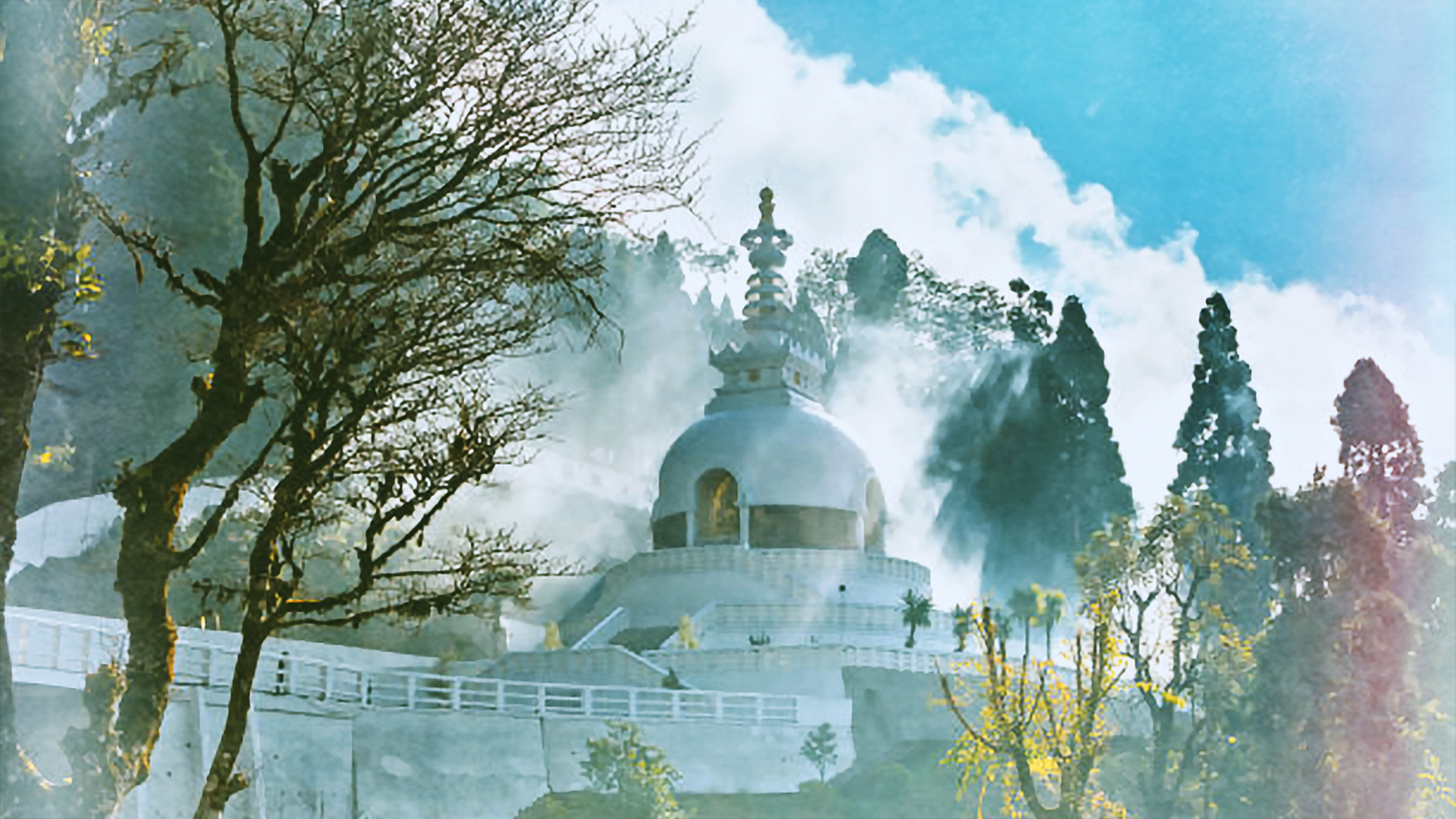Dzongri Trek
11 DAYS/10 NIGHTS
11 Days / 10 Nights
Stay
Breakfast
Sightseeing
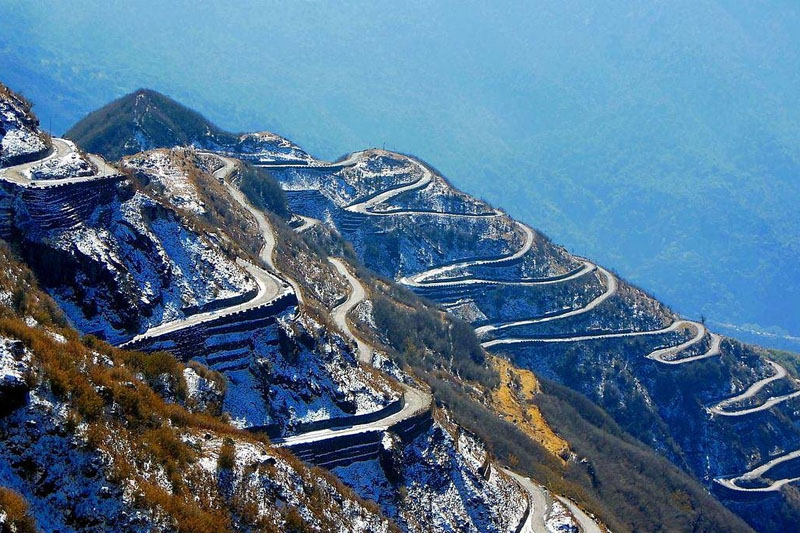
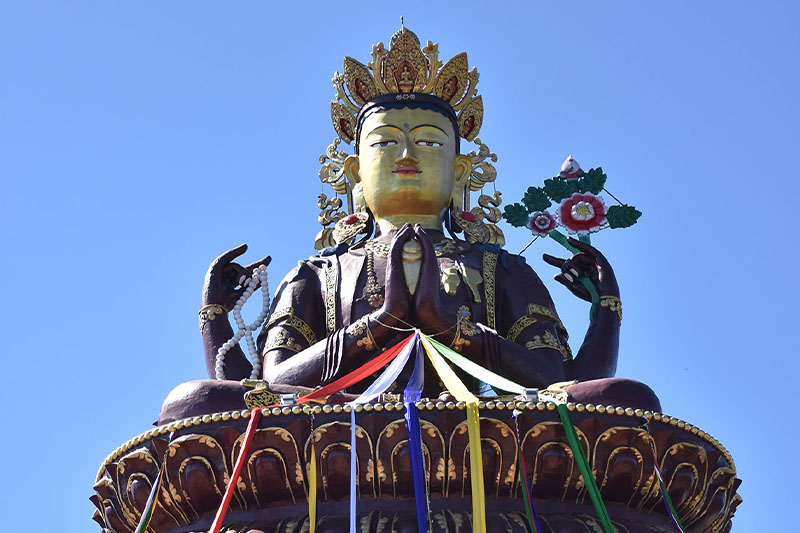
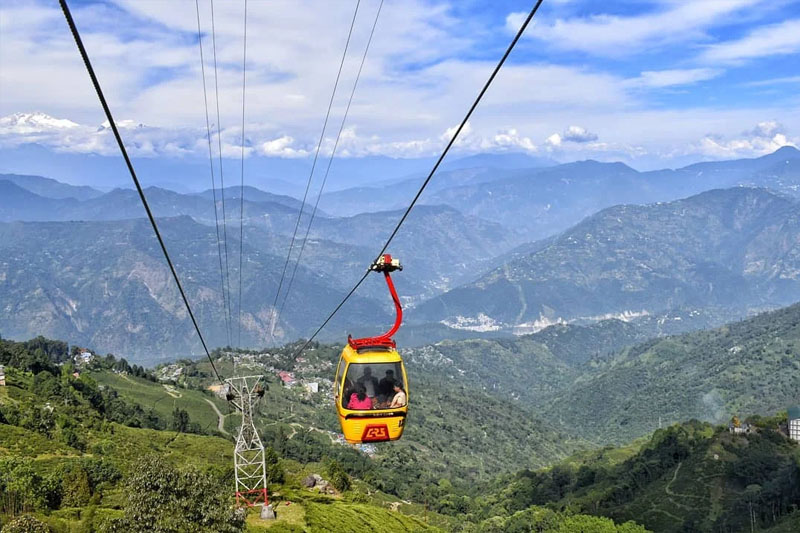
Overview
Trekking through Sikkim, The beautiful journey to Goechala starts at New
Jalpaiguri Station, where our representative is at 10 a.m. I will greet you. It
takes approximately 8 hours to drive Yuksom, 150 kms away. If there is no
congestion, it will take around 7 hours. After the meeting, it’s a quick start to
the destination. Yuksom, Sikkim’s historical capital, offers enough insight into
the rich heritage of Sikkim and its religious traditions. Yuksom was once the
capital of Sikkim. It offers many attractions, including culture, community, and
a peaceful, serene environment.
Itinerary
Stay – Overnight stay at the Guesthouse.
Meal – Dinner
Distance – 150 km
Time Taken – approx. 8 hrs
Altitude – New Jalpaiguri (NJP) Railway Station (374 ft / 114 meters),
Yuksom (5840 ft / 1780 meters)
Altitude Difference – 5466 ft / 1666 meter
Trekking through Sikkim, The beautiful journey to Goechala starts at New
Jalpaiguri Station, where our representative is at 10 a.m. I will greet you. It
takes approximately 8 hours to drive Yuksom, 150 kms away. If there is no
congestion, it will take around 7 hours. After the meeting, it’s a quick start to
the destination. Yuksom, Sikkim’s historical capital, offers enough insight into
the rich heritage of Sikkim and its religious traditions. Yuksom was once the
capital of Sikkim. It offers many attractions, including culture, community, and
a peaceful, serene environment. To ensure safety and official records of the
trek, the first is to obtain permission from Melli’s police station. You will need
to fill out basic information and attach two passport-sized photographs. The
rules for foreign nationals are similar. They will need to obtain an Inner Line
Permit or ILP to continue their journey. The drivers will fetch it for them, but it
should take no more than 30 minutes to complete. It’s easy to drive across
Melli, located at the border between Melli and West Bengal. The next stop is
Jorthang, where travellers can enjoy the delicious northeastern cuisine. It’s
then on to Yuksom for the return journey. The place is easily reached in the
evening. Legship is the last ATM stop for travellers who want to cash out
money. The hikers will be able to rest in the guesthouse once they reach
Yuksom. The tour guide will provide a brief overview of the tour around the
evening. He will explain the route, rules, and any environmental conditions.
The tour guide should be informed if you have any medical conditions.
Yuksom is also the final destination for travellers to pick up small meals or any
other supplies needed during the trek. Hikers will find plenty of shops around
the town to fulfil their needs.
According to the Sikkim government, foreigners (including OCI, NRI, and OCI)
must obtain a permit to trek in Sikkim. Foreigners must arrive in Yuksom one
day before receiving this permit. The ILP must be signed. This permit cannot
be processed before you arrive in Sikkim. Permit fees will cost Rs.2 000 per
person. Trekup India will assist you in obtaining the permit. Once you arrive,
we will issue the permit. You should note that the cost of an additional day is
not included in our trek fees.
Sikkim is not allowed to be climbed by Bangladesh, Myanmar, or China
citizens.
Stay – Overnight stay at the campsite.
Meal – Breakfast, Lunch and Dinner
Distance – 8 km
Time Taken – approx. 6 hrs
Altitude – Yuksom (5840 ft / 1780 mtr), Sachen (7200 ft / 2196 mtr)
Altitude Difference – 1360 ft / 416 meter
Trek Grade – Gradual
It takes about half an hour to reach the Pha Khola bridge. From there, the
forest is thick and cool. Gradually, the trail gently climbs. Although the trail
passes through the forest fringes, it is still exposed for approximately half an
hour. Look to your right for shelter halfway through the exposed trail.
You will continue walking through the humid jungle for the next hour and a half
until suddenly you see the Tshushay Khola waterfalls in a series of mini
waterfalls that join the Prek below. The Tshushay Kohola is crossed by a
large, iron bridge 50 meters later, and the trail starts to climb noticeably after
the bridge.
You will see another small cement bridge crossing the Mentogang Khola an
hour later (you won’t find a sign telling you its name). It is already 7,100 feet,
and you are only 20 minutes away from the Log Hut of Sachen.
At 7,200 feet, there is a small clearing with a single log house and shelter. A
few meters below the trail is the log hut. There is enough space for
approximately 6-7 people and an area to cook. The clearing is located just
above the shelter if you have a larger group. Although it is not visible from the
campsite, you can hear the Prek rushing down below.
Stay – Overnight stay at the campsite.
Meal – Breakfast, Lunch and Dinner
Distance – 7 km
Time Taken – approx. 5 hrs
Altitude – Sachen (7200 ft / 2196 meters), Bakhim (8650 ft / 2650 meters),
Tshokha (9750 ft / 3000 meters)
Altitude Difference – Sachin to Bakhim (1450 ft / 454 meters), Bakhim to
Tshokha (1100 ft / 350 meters)
Trek Grade – Gradual
Enjoy the clear, crisp morning and prepare for the journey to Tshokha at
9,700ft via Bakhim at an elevation of 8600ft. Although the trek is only 7kms, it
can take 7 hours. The height increases from this point, making hiking more
difficult. The day’s hiking route will take you through forested areas towards
Bakhim. Here you will find beautiful magnolias as well as Rhododendrons.
The next iron bridge over River Perk can be reached by a short walk of about
1km. It is fascinating to see the sparkling waters of River Perk and then to
take in the enchanting atmosphere. The bridge is where hikers will see the
prayer flags waving, marking the start of the Goechala trail. You can feel the
elevation gain as you move towards your destination. The steep climb through
the oak forest to Bakhim continues after this point. The hikers will be able to
see Mount Tenzinkhay and Mount Pandim as they climb. This is where the
trail becomes steeper, and the temperatures drop. Soon, Bakhim will be the
first destination of the day. Here you can arrange a short break. The forest
rest house is where trekkers often stop for long stops to take in the stunning
views of Yuksom Valley.
After a tiring climb, there are many excellent snack and tea stalls. Bakhim is a
superb place to refill your water. The trek to Tsokha continues for 2kms after
you have had some rest. Next is a mixture of steep ascents, descents, and full
of slopes. Trekkers will be able to enjoy the views of the alpine berries and
Rhododendrons at 9000 feet. The plateau of Tsokha can be seen and the
campsite for that day. Trekkers can stay in large wooden huts that hold at
least twenty people. There are still flat plains that can be used for tent
placement. It is a beautiful spot with stunning views of snow-clad Himalayan
peaks, Pandim and Kanchenjunga dominating the view. Enjoy the peaceful
beauty of the natural world and a restful night in the tents.
Stay – Overnight stay at the campsite.
Meal – Breakfast, Lunch and Dinner Distance – 9 km
Time Taken – approx. 7 hrs
Altitude – Tshokha (9750 ft / 3000 mtr), Phedang (12,100 ft / 3700 mtr),
Dzongri (12,900 ft / 3950 mtr)
Altitude Difference – Tshokha to Phedang (2350 ft / 700 mtr), Phedang to
Dzongri (800 ft / 250 mtr)
Trek Grade – Gradual to Moderate
As yesterday, climb to the little pond that leads to the monastery and then
follows its trail. Tshoka, a small hamlet located below you, begins to climb
quickly. Everywhere you look, red rhododendrons are growing. The entire
slope will glow a fiery red if you’re in bloom (May 1st/2nd Week). The trail
becomes a gentle climb after a steep climb that lasts about 30 minutes.
The trail becomes paved over wooden logs. The path is filled with
rhododendrons that make it a joy. The trail looks like it’s in a park with little
wooden benches along either side. Sometimes, the mist can filter through the
rhododendrons trees and intrude into the trail. The trail climbs all the way, and
trekkers can feel the altitude. After the log path, a regular stony track climbs to
Phedang in just 20 minutes.
Phedang is located at 13,000 feet and offers spectacular views of the snow-
clad mountain ranges. The landscape is dotted with a log hut and some
wooden benches. Here you can stop for lunch or rest. At Phedang, the trail
splits with one that leads to Kockchurang. You can get water from a spring
located slightly below the route to Kockchurang, and it is only 10-15 minutes
to the spring on a lower path.
Follow the trail to Dzongri, which runs across the clearing. You will soon see
the trail climb along the slope, lined by dwarf rhododendrons. With every step,
the views get better, but they are aware of muddy patches. It would be best if
you avoided these areas after a heavy rainstorm. The trail is a ridge climb, so
it switches between the opposite sides of the hill. You will see the Kabru and
Pandim ranges changing in the distance. The climb ends at a shrine with
many prayer flags an hour later. At 13,080 feet, this is the highest point on the
day’s trek.
After a short rest at the shrine, continue on the trail towards Dzongri. The trail
continues to undulate, with the first snow patches covering the roots of dwarf
rhododendrons.
At the trail bend, the Dzongri trekkers’ hut suddenly appears. A gentle stream
surrounds the hut. There are many camping areas around Dzongri, but only
the hut can accommodate 30 trekkers at once.
Trekkers who have climbed from Tshoka will find Dzongri a welcome sight.
Trekkers can feel the effects of altitude at Dzongri meadows, 12,980 feet.
Dzongri, primarily fields, is surrounded by the Kanchenjunga range’s mighty
peaks. Every direction has a snow peak that can be admired and taken in.
Dzongri is a fantastic reward for most trekkers. Many trekkers end their trek at
Dzongri and return to the same place they started.
Stay – Overnight stay at the campsite.
Meal – Breakfast, Lunch and Dinner
Altitude – Dzongri (12,900 ft / 3950 mtr)
The next day starts with an hour of trekking to the Dzongri top at 13675 feet.
Today is the rest day. All hikers are allowed to set up their campsite and enjoy
the day’s rest. This is especially true since the altitude gained the day before
was very high. It takes some time for the body to get used to this height.
Dzongri’s pictorial view is very captivating and rejuvenating. It also helps in
relaxation and gaining energy for the next day. Trekkers will find many Tibetan
prayer flags throughout the area, which flutter in the wind with great fanfare. It
is not difficult to see the Gigantic Himalaya snow peaks, absolutely stunning.
Kanchenjunga (8534m), Kabru (75353m) and Mount Pandim (66691m) are
the most prominent peaks. This stunning view makes for a breathtaking sight.
The spectacular view also includes Narsing (6147m) and Koktang (5825m), as
well as other peaks such Frey Peak and Kumbakarana (637m), Jupono,
Simro, and others. You can capture stunning scenes of the Himalayas here
and keep them in your heart forever. It is better to explore the area than stay
in a tent.
Stay – Overnight stay at the campsite.
Meal – Breakfast, Lunch and Dinner
Distance – 10 km
Time Taken – approx. 7 hrs
Altitude – Dzongri (12,900 ft / 3950 mtr), Kokcharang (12,000 ft / 3658
mtr), Thansing (12,900 ft / 3950 mtr)
Altitude Difference – Dzongri to Kokcharang (900 ft / 292 mtr),
Kokcharang to Thansing (900 ft / 292 mtr)
Trek Grade – Gradual to Moderate
Within half an hour, the slopes are occupied again by rhododendrons. Over 2
hours, the descent continues at gentle to moderate speed. The rhododendron
trees suddenly give way to the rhododendron forest. You lose 500 feet, and
the decline becomes steeper. You can spot birds in the woods. You can walk
silently through the forest and see birds hidden in the greens and browns.
Kockchurang emerges at the end. Find a path through the forest that leads to
the right. It leads to Phedang. There is a trekking hut in Kokchurang, but there
are no actual places to pitch tents. 50m away, the Prek Chu River flows
alongside the trekker hut. You can pitch 4-5 tents along the banks of this river
among the rocks. It is a small but beautiful campsite. It is a lovely camping
experience to have the mist hang over the river at night. The fog envelops the
tents, hearing the rapid river below.
Two large halls can hold 10-12 trekkers at a time in the trekker hut of
Kokchurang. A central hall can be used as a cooking area. Enjoy the cool river
breeze while you spend some time on this bridge. The water below is icy blue.
The rhododendron forests can be found on the opposite bank. The
rhododendrons bloom in June, but they can be seen all year round. The trail is
not paved. It is approximately 2kms between Thansing and the bridge.
Midway, the forests disappear, and the landscape becomes barren and rocky.
Thansing is a large meadow at the end of this climb. A disused trekker hut
marks the entrance to the field. Although the hut is suitable for use as a
kitchen, tents must be kept inside. You can have as many tents as you like in
the open meadow—right in front of Pandim, and the left wall Kanchenjunga.
Nights can be pretty cold at Thansing.
Stay – Overnight stay at the campsite.
Meal – Breakfast, Lunch and Dinner
Distance – 4 km
Time Taken – approx. 3 hrs
Altitude – Thansing (12,900 ft / 3950 mtr), Lamuney (13,600 ft / 4150 mtr)
Altitude Difference – 700 ft / 200 mtr
Trek Grade – Gradual to Moderate
The next day’s trekking schedule includes hiking to Lamuney, located at
13,650 feet. It takes approximately two hours to get to the destination. It is a
very relaxing day, so wake up at eight and have breakfast at 9. Then, depart
at 10 am. The trekking activity today is easy and much more fun than tiring. As
you would expect, the road to Lamuney is very sober through meadows and
over-stretched pastures on both ends.
It looks mind-blowing. Although the trail to Lamuney is pretty good, it’s not
close enough to the campsite that trekkers have difficulty with the steep climb.
Hikers can enjoy a hot lunch in Lamuney and then relax in the beautiful
surroundings. There is still plenty of adventure for the avid hikers.
The beautiful Samiti Lake is just 2kms away from the campsite. Although the
distance between Lamuney campsite and the Lake is only about an hour, the
trail is uneven and covered with pebbles and stones. Although camping is not
permitted near the Lake, trekkers are allowed to visit the area and enjoy its
stunning beauty before returning to base. The Lake’s spectacular view is
breathtaking, with its crystal clear waters rushing high above the rocks and
striking the banks. You can enjoy a lot of photography here with all the
stunning pictorial sights just waiting for you to capture in your camera. The
tour guide will brief you at the campsite about what to do before reaching your
destination. Enjoy the clear night sky and the fantastic array of stars at such
an elevation. It is best to call in a day ahead and get good sleep, as the next
day should start in the early hours.
Stay – Overnight stay at the campsite.
Meal – Breakfast, Lunch and Dinner
Distance – 18 km
Time Taken – approx. 13 hrs
Altitude – Lamuney (13,600 ft / 4150 mtr), Samiti Lake (13,700 ft / 4200
mtr), Goechala (15,420 ft / 4700 mtr), Thansing (12,900 ft / 3950 mtr) /
Kokchurang (12,000 ft / 3658 mtr)
Altitude Difference – Lamuney to Samiti Lake (100 ft / 50 mtr), Samiti
Lake to Goechala (1720 ft / 500 mtr), Goechala to Thansing (2520 ft / 750
mtr), Goechala to Kokchurang (3420 ft / 1042 mtr)
Trek Grade – Moderate to Difficult
The day eight trek is the most difficult and most prolonged. It takes trekkers to
Goechala at 15,100ft and back to Lamuney. The trek is 18 kms long and takes
approximately 13 hours. At 1 AM, the call to action is made for the day. It is a
good idea to leave early to have the most time to ascend and descend. Hikers
can also enjoy the stunning sunrise over the Himalayas by leaving early.
Without this, the trek will lose half its charm. The trekkers are instructed to
pack their bags well for the night to return to the campsite in time to have
lunch. If not, they can leave for Samiti Lake, which takes approximately an
hour. It’s a steep climb up to Goechala View Point, located at 15,100 feet and
5kms away from Lamuney. It takes around 3 hours to climb the point, but this
depends on how fast you are. It’s a steep climb from the Samiti lake to the
ridge. This is another reason you should exercise caution, as it narrowly
passes through the side of the mountains. These stunning snowy mountains
are simply breathtaking. The magical effect of the morning sun illuminating the
dark snow is astonishing. Words can’t describe the beauty and joy that this
scene creates. Other peaks that can be seen from the summit include Kabru
South and Kabru North, Kabru Dome, and Kangchendzonga.
After admiring the viewpoint for a while, you will descend to Lamuney as soon
as possible. Enjoy a hot meal at Lamuney’s campsite and then pack your
belongings to continue the descent to Thansing or Kokcharang. It is best to
descend as many times as possible on the same day as the campsite before
you choose to stay at it. It can be described as a day with a good night’s sleep
at the tents once you reach Thansing.
Stay – Overnight stay at the campsite.
Meal – Breakfast, Lunch and Dinner
Distance – 16 km
Time Taken – approx. 9 hrs
Altitude – Thansing (12,900 ft / 3950 mtr) / Kokchurang (12,000 ft / 3658
mtr), Phedang (12,100 ft / 3700 mtr), Tshokha (9750 ft / 3000 mtr)
Altitude Difference – Thansing to Phedang (800 ft / 250 mtr), Kokchurang
to Phedang (100 ft / 42 mtr), Phedang to Tshokha (2350 ft / 700 mtr)
Trek Grade – Gradual
You will descend from Thansing at 12,900ft to Tsokha (9700ft). It takes
approximately 7 hours to complete the 16 km trek. The day’s journey begins at
7 am. It is best to reach the destination by 3–4 pm. To avoid having to camp
for too long, pack a packed lunch. Phedang is the first destination and takes
approximately 4 to 5 hours. The return trail is straightforward and exciting, with
no need to cross Dzongri. The trail continues to the Rhododendron forest,
which must be crossed to descend further. This forest is a beautiful place to
be, as it vibrates with enthusiasm and new energy. It is easy to follow and
doesn’t have any steep stretches. This makes it a pleasant trip. The best view
on this trail is Mount Pandim, with its snow-covered peak rising out and
glorifying it. Although it is only five hours to Phedang, it can be tiring. That’s
why it’s best to rest once you reach Phedang. Trekkers have plenty of options
for temporary camping spots where they can relax and enjoy their lunches in a
relaxing atmosphere. The cool mountain breeze is very soothing and
refreshing.
You can enjoy the rich atmosphere and take some photos. The trek to Tsokha
continues on the same trail as the previous journey. Distance from Phedang
and Tshoka: 5 km. As mentioned earlier, the trail runs through forest lands,
and rich outgrows of flora & fauna. It is easy terrain to descend, especially on
steep slopes. It is best to avoid taking too many breaks along the route to
Tsokha before it gets dark. After reaching Tshoka, you can call it a night and
set up your tents for a delicious hot dinner and a good night’s sleep. It would
be best if you also got as much sleep as possible the next day.
Stay – Overnight stay at the campsite.
Meal – Breakfast, Lunch and Dinner
Distance – 15 km
Time Taken – approx. 8 hrs
Altitude – Tshokha (9750 ft / 3000 mtr), Bakhim (8650 ft / 2650 mtr),
Sachen (7200 ft / 2196 mtr), Yuksom (5840 ft / 1780 mtr)
Altitude Difference – Tshoka to Bakhim (1100 ft / 350 mtr), Bakhim to
Sachen (1450 ft / 454 mtr), Sachen to Yuksom (1360 ft / 416 mtr)
Trek Grade – Gradual
The goal for this day’s journey the destination is Yuksom, where was starting
stage of our trek at 5,670 feet. It’s a lengthy 15km trek, and the best time to
cover it is about 7 hours. The day begins early like every other day, breathing
fresh air and then resuming with renewed energy for a full day. Lunch packed
in a bag is taken along to reduce the time for a break as we descend. The
path to descend is precisely the same as that followed while climbing towards
Goechala. Admiring the views of the snow-covered Himalayas, this is a lovely
route brimming with natural beauty. The route, as mentioned earlier, is free of
sharp turns, which makes the trek more accessible and more enjoyable.
Similar to the previous paragraph, the road goes through the most popular
places in Bakhim and Sachen. Bakhim and Sachen head towards the three
bridges made of iron, and eventually, it moves to Yuksom. From Sachen the
route, it isn’t all that appealing due to the zig-zag design and the constant
ascending and descending in altitude.
Hillock climbs define the final places of the route. While it may be difficult after
a day of physical exhaustion, the most enjoyable part is that it’s just a few
meters. After the hillocks have been crossed before reaching the gorgeous
Yuksom area, as they approach the town, the network of telecoms is back in
place that allows travelers to connect quickly with their loved ones and
relatives for a sense of well-being. With the views of small, sloping villages, it’s
an excellent return towards this Yuksom town. Once you’ve reached the city,
stay in the guesthouse and relax with a refreshing shower, a delicious meal,
and a restful night’s sleep. But for those who are enthusiastic, there is the
possibility of exploring the town during the evening. Explore the indigenous
culture and learn more about their culture and their religious convictions. The
locals are straightforward and welcoming, and interfacing with them will
always be enjoyable. If you have time, travelers could go to any or more of the
Sikkim monasteries to experience an authentic taste of Sikkim’s culture. It’s
also an excellent opportunity to visit the local stores and discover more about
the materials and handicrafts available. Make sure to look through the gift
options for your loved ones and take a photo to remind you of the fantastic
trek that you have enjoyed over the last few days. It’s among the most
beautiful hikes in India.
Meal – Breakfast
Distance – 150 km
Time Taken – approx. 8 hrs
Altitude – Yuksom (5840 ft / 1780 mtr), New Jalpaiguri (NJP) Railway
Station (374 ft / 114 mtr)
Altitude Difference – 5466 ft / 1666 mtr
Trek Grade – By Road
The following day is the day that concludes the trek. It is recommended to
begin early as a long drive is in store for the day. In the morning, you can
enjoy the stunning sunrise from Yuksom, take your luggage and enjoy a tasty
breakfast before starting the journey. It is recommended to begin at 8 am to
ensure that travelers can reach New Jalpaiguri station by evening. The total
distance for the day is 150kms and will take no over 8-9 hours. But this is
contingent on road conditions and the congestion on the day. The return
journey is enjoyable and scenic, with the stunning view of the Himalayas in the
distance, which makes for a pleasant trip. Lunch is available at Jordan, where
you can find several eateries that serve good Chinese, Indian, continental and
local cuisines. After having lunch, begin early to get to the station before the
designated time.
Because the time for travel is not set and is not guaranteed, it is
recommended for travelers to make an onward trip to New Jalpaiguri Station
late the night. Suppose trains aren’t in operation at night. In that case,
holidaymakers can choose one night in New Jalpaiguri and arrange for an
earlier departure. However, the most probable time to arrive at New Jalpaiguri
is 5 pm. New Jalpaiguri is among the most prominent locations within the
Jalpaiguri district in West Bengal. In case of time is available, travelers can go
to the famous Hong Kong Market, which is about 4kms away from NJP
station, and Bidhan Market, which is located 5 kms away from NJP station.
Discover the best products available there and have a great time in the
beautiful restaurants of the region. When the time is set, you can move ahead
for a further journey.
Included
Excluded
Tours location
Package details
-
All side scenes are covered
-
Top rated drivers
-
Comfortable and hygienic vehicle
- 1. SUV:Innova/Innova Crysta/ Xylo/Scorpio
- 2. Hatch back/Sedan: Wagon R/ Swift Dzire.


